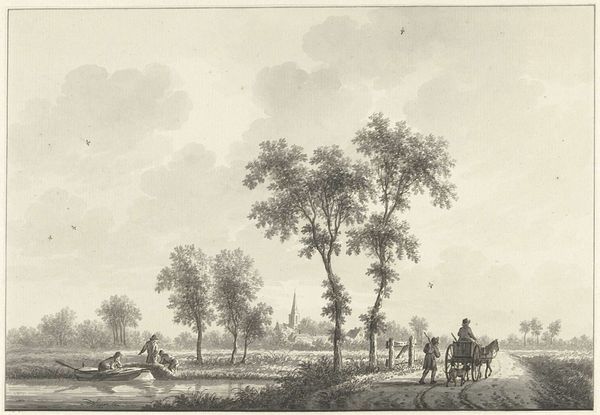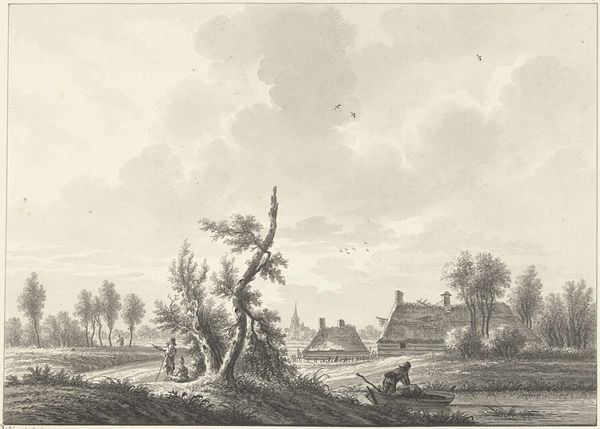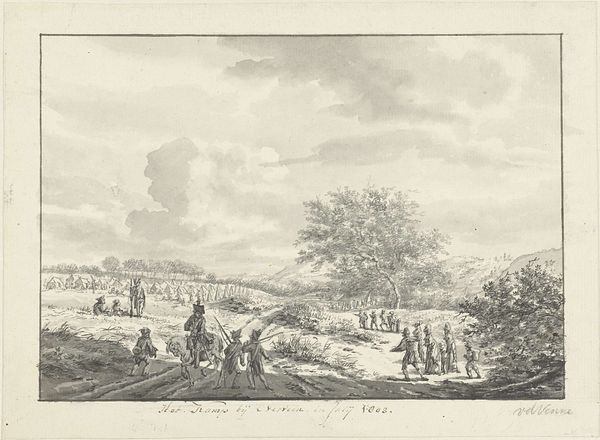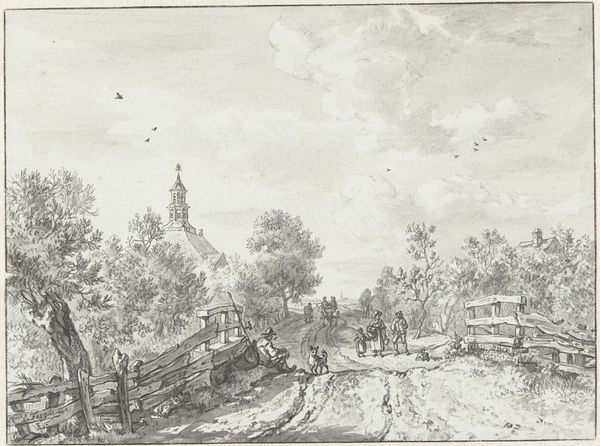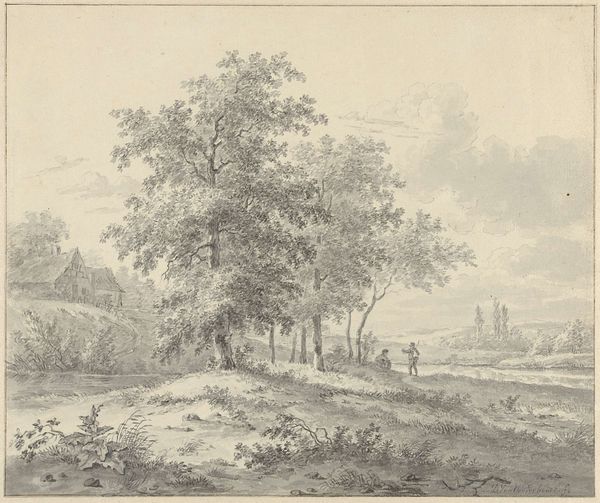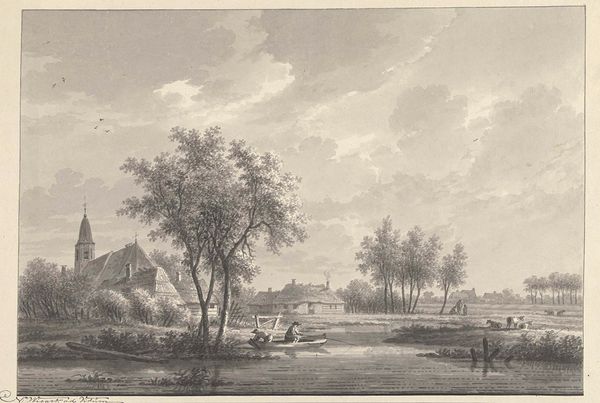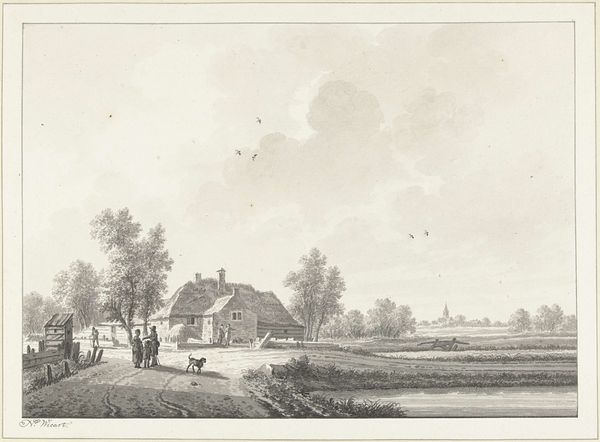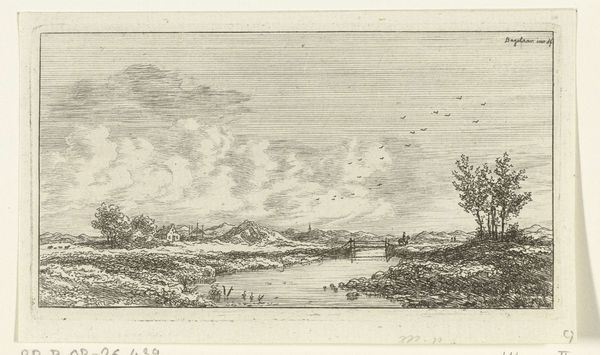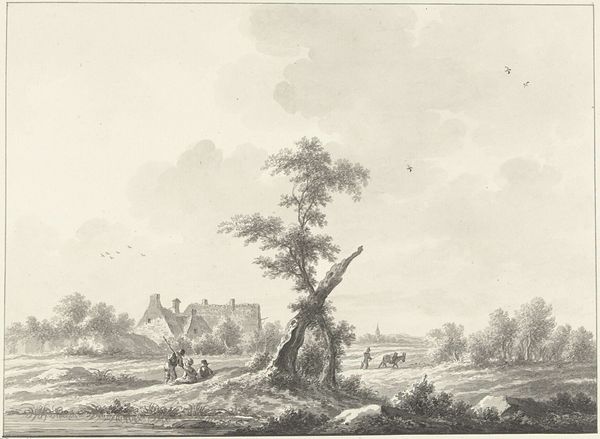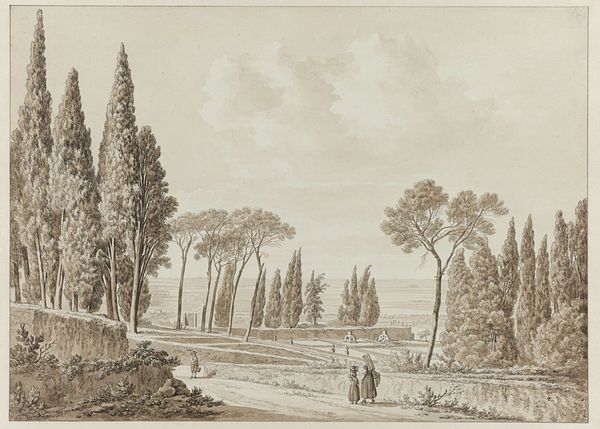
drawing, print
#
drawing
#
neoclacissism
# print
#
landscape
#
line
#
realism
Dimensions: height 237 mm, width 327 mm, height 279 mm, width 387 mm
Copyright: Rijks Museum: Open Domain
Editor: This is “Het dorp Huissen (?) in Gelderland,” a drawing and print made sometime between 1758 and 1815 by Nicolaas Wicart. I am struck by the serene stillness of this landscape; the pale washes create a sense of tranquility. How do you approach a piece like this from a formalist perspective? Curator: Observe the dominance of line and the calculated arrangement of forms. Note how the road acts as a vector, guiding the eye towards the church spire and windmill, establishing depth. Editor: I do notice that the line work defines the details. Are you suggesting the composition intentionally leads us to that focal point in the distance? Curator: Precisely. Consider the balance: the clustered trees on either side, the figures strategically placed to interrupt the foreground. The subtle variations in tone create texture and delineate space without resorting to overt contrasts. We can consider it a measured exercise in perspective and balance. Editor: So you're focusing on how the artist meticulously constructed the image using purely visual elements. What does that reveal to us? Curator: By attending to the artist's choices in rendering space, form, and texture, we can deduce the formal aims, revealing an inclination toward rational organization. Neoclassicism often prized order above emotional expressiveness; how do you see this principle manifested here? Editor: It’s definitely there in the precise details, even in something as ‘natural’ as the cloud formations. I now appreciate the carefully constructed balance that might otherwise go unnoticed! Curator: And with an awareness of form, the work moves beyond a simple representation of a village. What do we both take from that realisation?
Comments
No comments
Be the first to comment and join the conversation on the ultimate creative platform.
